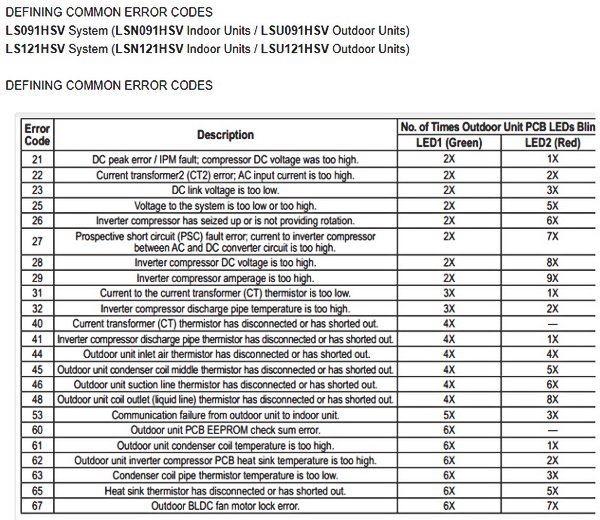
The OE error code effectively acts as your air conditioner’s way of flagging that something isn’t quite right, particularly with the drainage system. Imagine it like a car’s check engine light, signaling that a little attention is needed to keep things running smoothly. In essence, it means that your air conditioner is having trouble draining the water it collects from the air. This can happen for a variety of reasons, which we’ll dive into below. So, if you’re facing this issue, stay tuned as we explore what might be going wrong and how you can tackle these problems head-on.
Understanding the OE Error Code
First off, let’s break down what this mystical OE error code actually signifies. For most LG air conditioners, this code pops up when there is a problem with water drainage. You see, your air conditioner extracts moisture from the air to cool your space, and this moisture then has to go somewhere. Think of it like how a dehumidifier collects water. This water is usually drained away, either through a hose or a drain pipe. However, if something blocks this process, your air conditioner isn’t happy, and the OE code will make its appearance.
This drainage issue can result from several causes. For one, the drain hose might be bent or kinked, much like a garden hose that gets twisted, preventing water from flowing smoothly. Alternatively, there might be a clog somewhere in the drainage system—a bit like how a sink gets backed up when something blocks the drain. The unit’s internal components can also experience wear and tear, leading to inefficient water removal.
So, what’s next when you see the OE code? Understanding why this error occurs is the first step in resolving it. Let’s take a closer look at some common causes and what you can do to get your air conditioner back to tip-top shape.
Common Causes of the OE Error Code
When it comes to diagnosing the OE error, we’ll need to consider a few usual suspects. One of the main culprits is a clogged drain hose. Imagine trying to sip a thick milkshake through a straw; if the straw is blocked, you’re not going to have much success. Similarly, if the drain hose of your air conditioner is clogged, the water has nowhere to go, leading to the OE error.
Another potential cause could be the drain pump. In some models, the air conditioner relies on a pump to help push water out of the unit. If this pump fails, it’s like having a broken bicycle chain—you won’t be going anywhere. The error code may appear because the pump isn’t moving water as it should, and this can be due to mechanical failure or a power issue.
Debris or dirt can also play a role. Over time, dust and dirt can accumulate in the air conditioner, clogging the components that manage water drainage. It’s akin to how lint builds up in a dryer and needs to be cleaned out regularly. If not maintained, the unit can become sluggish, and faulty drainage may trigger the OE error code.
Steps to Resolve the Error Code
So, now that we know what might cause the OE error to rear its head, how do we go about fixing it? Well, let’s start with the easiest solution: checking the drain hose. Make sure it is free from kinks and clogs, allowing water to flow freely. A simple realignment might be all that’s needed.
Next, inspect the drain pump, if your model has one. Ensure it’s functioning correctly. You may need to consult the user manual for instructions on checking and possibly replacing the pump. Don’t hesitate to call a professional if this feels a bit out of your comfort zone.
Lastly, give your air conditioner a thorough clean. Remove the unit’s cover, and use a soft brush or cloth to clean out any dust and debris that have settled inside. Regular cleaning can prevent many common issues, including those that lead to OE error codes.
Preventing Future OE Errors
After resolving the OE error code, it’s a good idea to take steps to prevent it from happening again. Regular maintenance is key here. Just like how you’d service a car, your air conditioner benefits from routine checks and cleaning.
Schedule a regular maintenance routine. Clean the filters and inspect the drainage system to ensure everything is functioning as it should. Keep an eye on the ambient conditions around your air conditioner as well—high humidity could increase moisture buildup and potentially lead to drainage issues.
It’s also smart to be proactive about seasonal changes. As seasons shift, more or less moisture may be present in the air, and your unit may need adjustments to handle these changes efficiently. Consider consulting with an HVAC professional for a seasonal check-up to ensure everything is in working order.
By keeping a close watch on your air conditioner’s health, you can enjoy a cool, error-free summer. Remember, prevention is the best way to keep error codes at bay, ensuring your LG air conditioner runs smoothly, so you stay comfortable no matter the season.